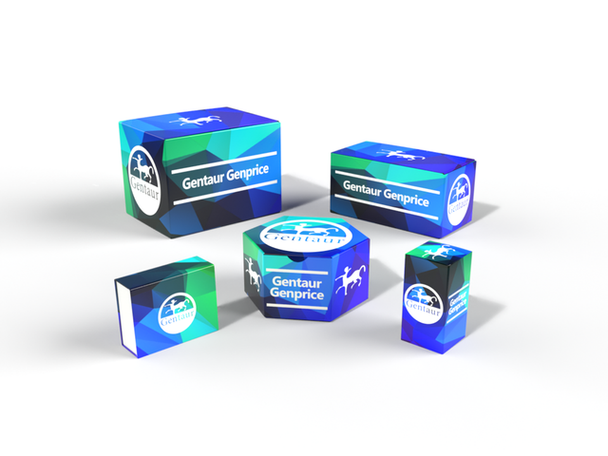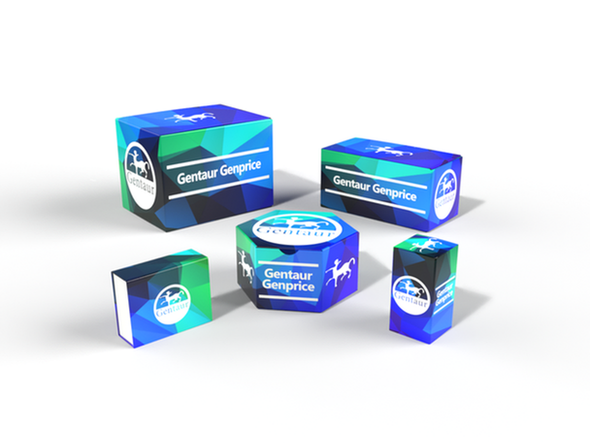749
Human Connective tissue-activating peptide III (CTAP-III) ELISA Kit | KTE62627
- SKU:
- 749-KTE62627
- Availability:
- Usually ships in 5 working days
Description
Human Connective tissue-activating peptide III (CTAP-III) ELISA Kit | KTE62627 | Gentaur UK, US & Europe Distribution
Application: This Human Connective tissue-activating peptide III (CTAPIII) ELISA Kit employs a two-site sandwich ELISA to quantitate CTAP? in samples. An antibody specific for CTAP? has been pre-coated onto a microplate. Standards and samples are pipetted into the wells and anyCTAP? present is bound by the immobilized antibody. After removing any unbound substances, a biotin-conjugated antibody specific for CTAP? is added to the wells. After washing, Streptavidin conjugated Horseradish Peroxidase (HRP) is added to the wells. Following a wash to remove any unbound avidin-enzyme reagent, a substrate solution is added to the wells and color develops in proportion to the amount of CTAP? bound in the initial step. The color development is stopped and the intensity of the color is measured.
Detection Method: Colorimetric
Conjugate: N/A
Sample Type: Cell culture supernatants#Serum#Plasma#Other biological fluids
Assay Type: Multiple steps standard sandwich ELISA assay with a working time of 3-5 hours. It depends on the experience of the operation person.
Kit Component: • Human Connective tissue-activating peptide III microplate
• Human Connective tissue-activating peptide III standard
• Human Connective tissue-activating peptide III detect antibody
• Streptavidin-HRP
• Standard diluent
• Assay buffer
• HRP substrate
• Stop solution
• Wash buffer
• Plate covers
Features & Benefits: Human Connective tissue-activating peptide III (CTAPIII) ELISA Kit has high sensitivity and excellent specificity for detection of Human CTAP?. No significant cross-reactivity or interference between Human CTAP? and analogues was observed.
Calibration Range: Please inquire
Limit Of Detection: Please inquire
Usage Note: • Do not mix components from different kit lots or use reagents beyond the kit expiration date.
• Allow all reagents to warm to room temperature for at least 30 minutes before opening.
• Pre-rinse the pipet tip with reagent, use fresh pipet tips for each sample, standard and reagent to avoid contamination.
• Unused wells must be kept desiccated at 4 °C in the sealed bag provided.
• Mix Thoroughly is very important for the result. It is recommended using low frequency oscillator or slight hand shaking every 10 minutes.
• It is recommended that all samples and standards be assayed in duplicate or triplicate.
Storage Instruction: The unopened kit should be stored at 2 - 8°C. After opening, please store refer to protocols.
Shipping: Gel pack with blue ice.
Precaution The product listed herein is for research use only and is not intended for use in human or clinical diagnosis. Suggested applications of our products are not recommendations to use our products in violation of any patent or as a license. We cannot be responsible for patent infringements or other violations that may occur with the use of this product.
Background: Chemokine (C-X-C motif) ligand 7 (CXCL7) is a platelet-derived growth factor that belongs to the CXC chemokine family. It is an isoform of Beta-Thromboglobulin or Pro-Platelet basic protein (PPBP) .Beta-thromboglobulin (β-TG) has a molecular weight of 35000 daltons and is a specific protein of platelets. Composed of 4 identical subunits; It is synthesized in the cells as a biologically inactive 15 kDa precursor called PBP (platelet basic protein) . It is stored in the Alpha-granules of platelets and released in large amounts after platelet activation.It is a protein that is released in large amounts from platelets following their activation. It stimulates various processes including mitogenesis, synthesis of extracellular matrix, glucose metabolism and synthesis of plasminogen activator.
Alternative Names: CTAP?
Search name: CTAP?
Tag: CTAP3






